Why the Marcoses’ comeback is more tragic than ‘Shame on you’
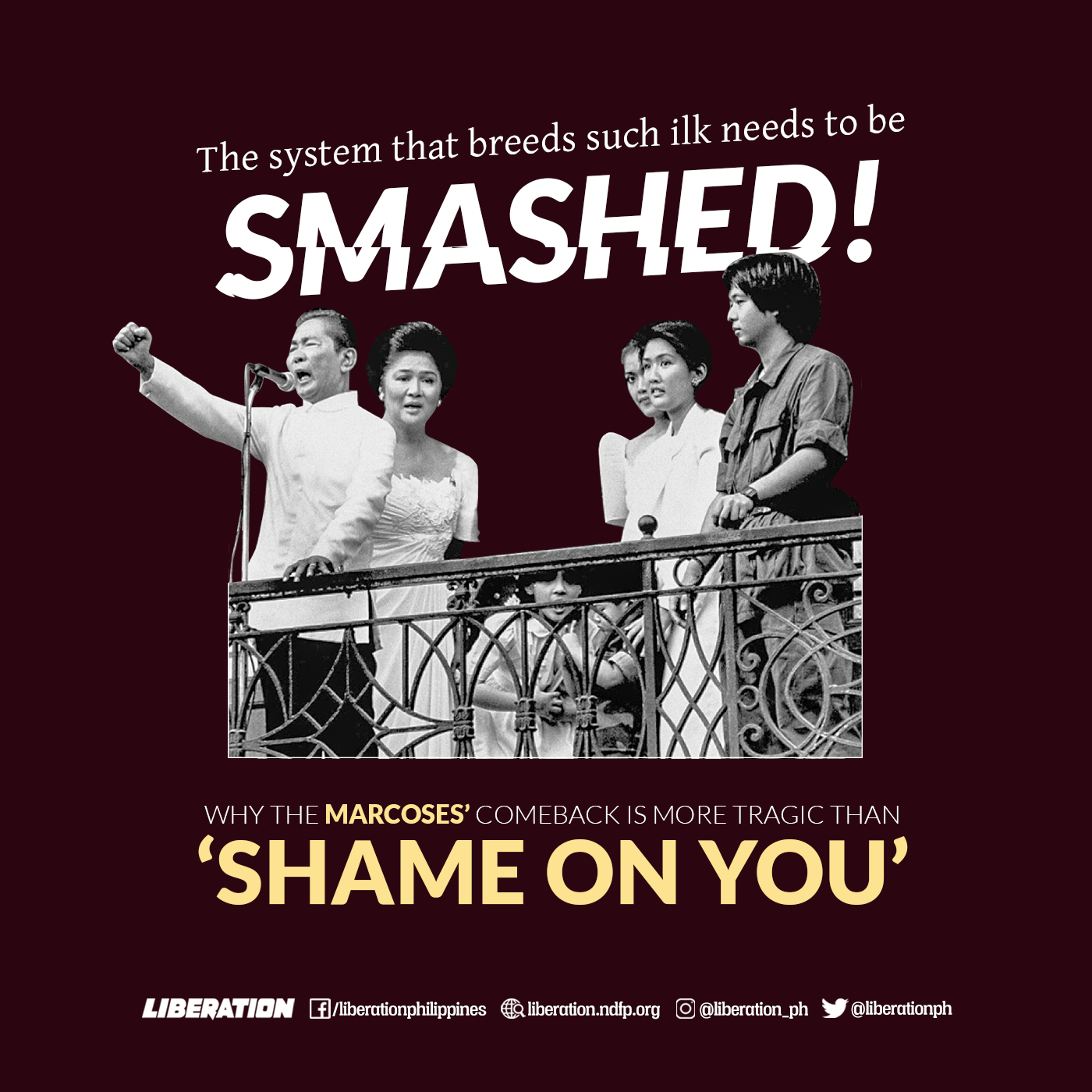
Forgive and forget. Move on. Really?
As years go by—after the Filipino people finally ousted the Marcos dictatorship in 1986—it gets better and better for the Marcoses. They haven’t returned the estimated $10-billion they stole while Ferdinand Marcos was dictator and tyrant, and Imelda Marcos and two of eldest children, Imee and Bongbong, have occupied various government posts.
With a huge war chest that can only grow bigger with time, they are being served by a platoon of lawyers, allies at various levels of reactionary government, PR people, false historians, and keyboard warriors, and most of all, by the same bureaucrat capitalist system that nurtured them in power.
It lets them amass wealth at the cost of thousands of lives and the Philippines’ genuine agricultural and industrial development. It helped to pluck them out of reach of People Power and allowed them to spend five years of lavish and loud exile in Hawaii. Upon their return, towing the embalmed body of their dictator patriarch, this system welcomed them back into the fold as they slowly carved back their fiefdom.
INCHING THEIR WAY BACK TO POWER
Imelda Marcos twice attempted to run for President—in 1992 when she lost and in 1998, when she withdrew from candidacy in the middle of the campaign. In between her two presidential bids, Imelda won a seat in Congress where she served as Leyte representative for three years from 1995 to 1998. In 2010, Imelda again won a seat in Congress, this time representing the province of Ilocos Norte.
Starting from their base at Ilocos Norte, the two elder Marcos siblings took turns being governor or Ilocos Norte Representative from 1992 to 1998. It was 24 years since dictator Marcos was ousted when Bongbong Marcos entered the Senate in 2010. It took longer for Imee Marcos to enter the national scene via a Senate seat in 2019.
It was only in Bongbong Marcos’s first stab at vice-presidency in 2016 that they tasted their first defeat in what some reports call their ‘spectacular comeback.’ Unaccustomed to setback, Bongbong lodged an electoral protest he can’t let go of even after three years.
Since their inglorious, forced exit in 1986, the family of deposed dictator Ferdinand Marcos has now positioned itself back as close as possible to Malacañang.
But for Bongbong Marcos’s defeat at the 2016 national polls, he would have been just a heartbeat away from the presidency, a very real threat to the Filipino people considering Duterte’s illness. If Marcos Jr had “won” the vice-presidency, Duterte would have had added to his legacy the Marcoses’ total rehabilitation. As things stand now, two of the Marcos siblings are running among the pack that’s circling Malacañang.
The Marcoses is one big example of bureaucrat capitalism.
To this day articles are being written about how the dictator Marcos ‘smartly’ looted the national coffers, put up companies and seized stakes in strategic businesses, and how he ‘transformed’ the armed forces and the police to make it partisan and more corruptible than usual. US propped him up and let him use the state forces it had established, trained and armed for their own imperialist ends, facilitated by its favored local puppet. Marcos, their ‘son-of-a-bitch’ as then President Ronald Reagan said, only became a ‘problem’ to imperialist US when the people were protesting in millions. The local armed communist revolution was growing by leaps and bounds and had led the fight against the dictatorship and its imperialist master.
IT TAKES A CORRUPT SYSTEM TO REINSTATE THE MARCOSES
Marcos’ ouster will always be a historical triumph of the Filipino people’s collective power— both the armed and unarmed, those in the open and underground struggles. The ongoing turbo-charged rehabilitation of the Marcoses under Duterte, however, is as loud a reminder as we all can get that, no, the people cannot stop at just ousting the current, most abusive tyrant.
The system that breeds such ilk needs also to be smashed.
This system has proven to have merely continued the puppet presidency and imperialist domination of the country.
The Communist Party of the Philippines (CPP), in a statement issued in 2018 pinpointed that the “successive reactionary regimes failed miserably to address the clamor of the Filipino people for swift justice. Every ruling regime allowed the Marcoses to return stage by stage. None carried out a decisive act of justice fearing this will rouse demands for the same measures to be meted against them over the same crimes they themselves commit while in power.”
At the outset, Cory Aquino, responding to insistent public demand, established the PCGG (Phil. Commission on Good Governance) to go after the Marcoses’ ill-gotten wealth. But, her administration emasculated it by ordering it to seize nothing and work instead through the courts. This was of course peanuts for the dirty-moneyed Marcoses.
The US imperialist’s rescue of their once serviceable puppet continued even after the Marcoses returned to the Philippines. The US redacted transactions involving US organizations in their records. The Central Intelligence Agency (CIA) refused to disclose what they knew, reportedly prompting a veteran of PCGG to call the US and Marcoses “partners in theft.” The US likely has loads of damning information on the kleptocracy and rights abuses of the Marcoses. Not only does it enjoy control of the local state forces, it’s also been known to keep tabs on even its “allies,” according to a declassified report on the CIA’s eavesdropping on conversations of government leaders such as that of the Philippines.
With clues from the US and their latest puppet on how the Marcoses were to be cossetted since the late 80s, Marcos died in Hawaii without being punished by the Filipino people. His widow, Imelda, returned to the Philippines with her three adult children in 1992. She was greeted by an avalanche of graft cases. But with their political allies regaining government posts, she never had to worry about jail time or threats of warrants of arrest.
Imelda was convicted at least twice for graft, once in 1993 for a fraudulent land deal and in 2018 for illicit financial dealings with Switzerland-based NGO’s.
But she remains free to this day. In the 2018 conviction, under Duterte, she was asked to pay bail of only P300,000, despite the gravity of the case and the amount of what’s stolen. The conviction is turning out into a ploy to fasttrack the movement in the case.
After more than five administrations (including two Aquinos), more than 90 lawyers and personnel of PCGG at the increasingly frustrating trail of seeing signs of billions of hidden wealth, only to be whisked away before their eyes, and the precious precious length of time that’s gone by, the Marcoses still have much of the ill-gotten wealth. Some of it were divulged in the upheaval of disclosures regarding Panama papers, where the ultra rich keep their money away from taxes and prying eyes. By now it’s clear the graft cases against the Marcoses were only to placate the angry masses.
MARCOSES’ FINAL REHABILITATION UNDER A MARCOS CLONE
The might of people’s victory in the ouster of Marcos and the underlying desire for genuine democracy is such that it took the Marcoses more than three decades before bureaucrat capitalism can ease them into Malacañang as ‘honored’ guests.
The Marcoses managed to do it under another puppet president they supported as candidate, who publicly claims he idolizes Marcos, and who looks back at his father’s political career as one that had benefited from the Marcoses.
And, before we forget, a president who evidently wants to be another dictator and tyrant. He himself has reprised many Marcosian tactics.
Despite his anti-corruption posturing, Duterte early into his term stunned the nation in allowing Marcos’ frozen remains to be buried, after at least two postponements due to protests, at the Libingan ng mga Bayani in November 2016. The most brazen of post-Edsa puppet presidents at helping the Marcoses, he nevertheless balked at having the requisite public pomp expected for a true heroes’ and former president’s burial. It took him a year before he set out again to glorify the Marcoses. The Philippine government commemorated Marcos in postage stamps.
Under Duterte the corruption cases against the Marcoses that dragged on for more than three decades are being thrown out one by one.
In August and October 2019 several ill-gotten wealth cases against the Marcoses, 27 to 31 years in court, were dismissed for lack of evidence from government lawyers, or for their failure to attend court hearings.
The bulk of their massive loot remain undisclosed to the people they stole it from. Estimates of what the PCGG managed to recover ran from just one to two billion dollars. The precious works of arts bought with stolen money inadvertently would show in Imeldific shots in her posh digs, but they always disappear when investigators come knocking. The money they extorted from coconut farmers were partially recovered but each succeeding administrations made it difficult for the coconut farmers and real owners of the fund to fully recover it.
PEOPLE MUST CLIP THE MARCOSES’ GREED: FROM ILOCOS NORTE TO MALACAÑANG
Looking thus at the Marcoses’ rehabilitation in power, it is not true that horrors repeat itself. It gets more horrendous in Part 2.
Unapologetic, flushed with their success, they are greedy for more.
They’re spoiled believing they can get away with it, again and again. They’re coming back to do more of the same on a vehicle much bigger and ratcheted up by their original loot, oiled by blood, sweat and tears of injustices to those they had oppressed, and covered by the same imperialist power that continues to lord over the country as long as their puppets dutifully run it to the ground for their businesses and military interests.
More than three decades since the world applauded the Filipino people’s uprising that booted out the Marcoses, these Marcoses have not been taken to account for the thousands of human rights violations and humanitarian crimes committed to maintain the dictatorship.
Now the maturing children, beneficiaries of dictator Marcos’ loot and network of allies and cronies, are out and about for another chance in Malacañang. They are intent as well in whitewashing their family’s crime, Imee Marcos chose the committee on culture in the Senate. Like father like daughter, she faked her academic achievement and when confronted about their family’s crimes, she tells the Filipinos to ‘Move on.”
Against the Marcoses’ rehabilitation and whitewashing, against presidents desiring to be another Marcos, the Filipino people “have no other recourse but to take revolutionary action and overthrow the ruling system and class rule of big bourgeois compradors, big landlords and bureaucrat capitalists. Only be wielding revolutionary power—democratic people’s power—can they subject the biggest criminal and fascist oppressors to just punishment with full decisiveness and dispatch,” the CPP said.###
#NeverAgain
#NeverForget
—–
VISIT and FOLLOW
Website: https://liberation.ndfp.info
Facebook: https://fb.com/liberationphilippines
Twitter: https://twitter.com/liberationph
Instagram: https://instagram.com/liberation_ph



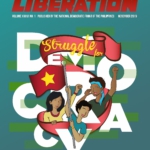
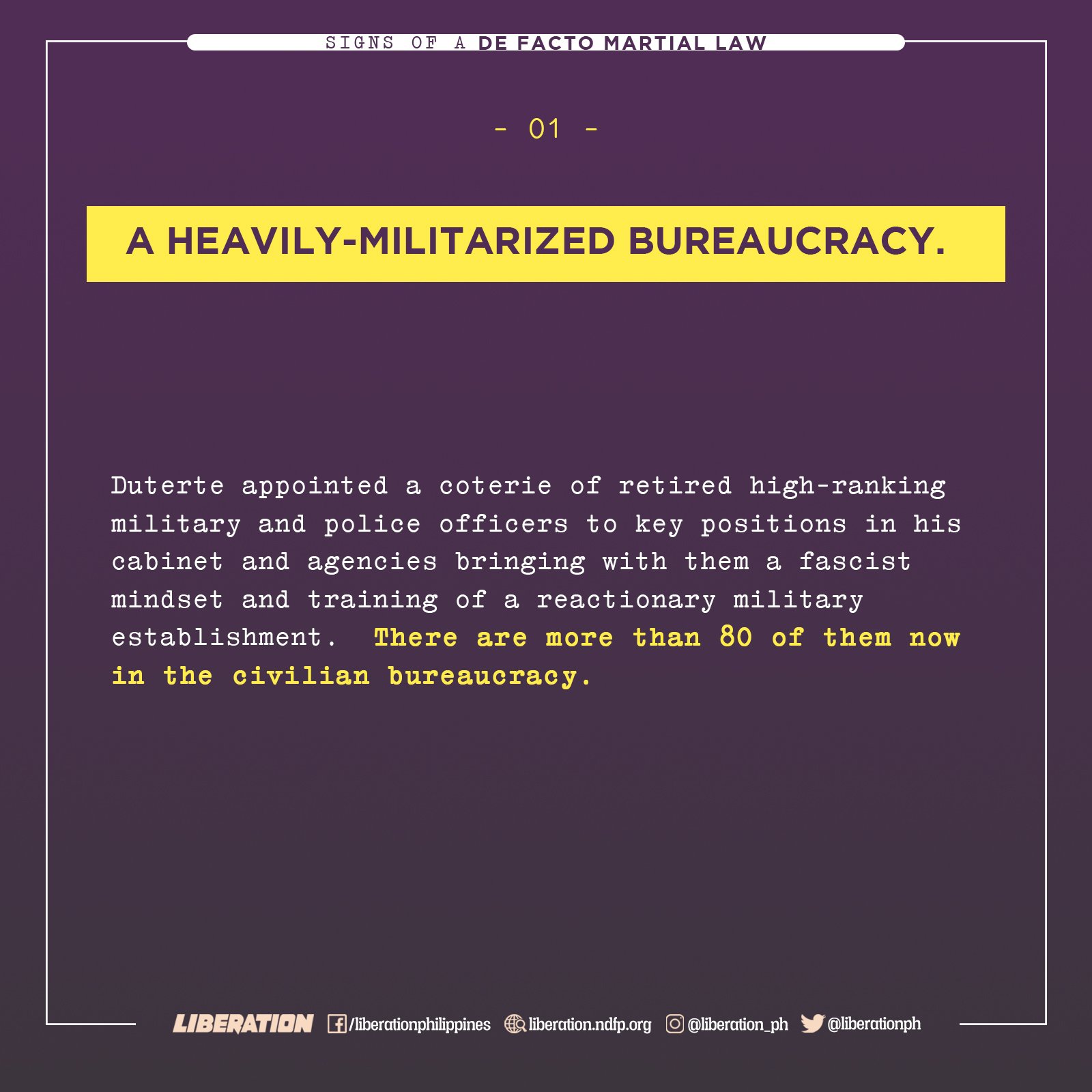
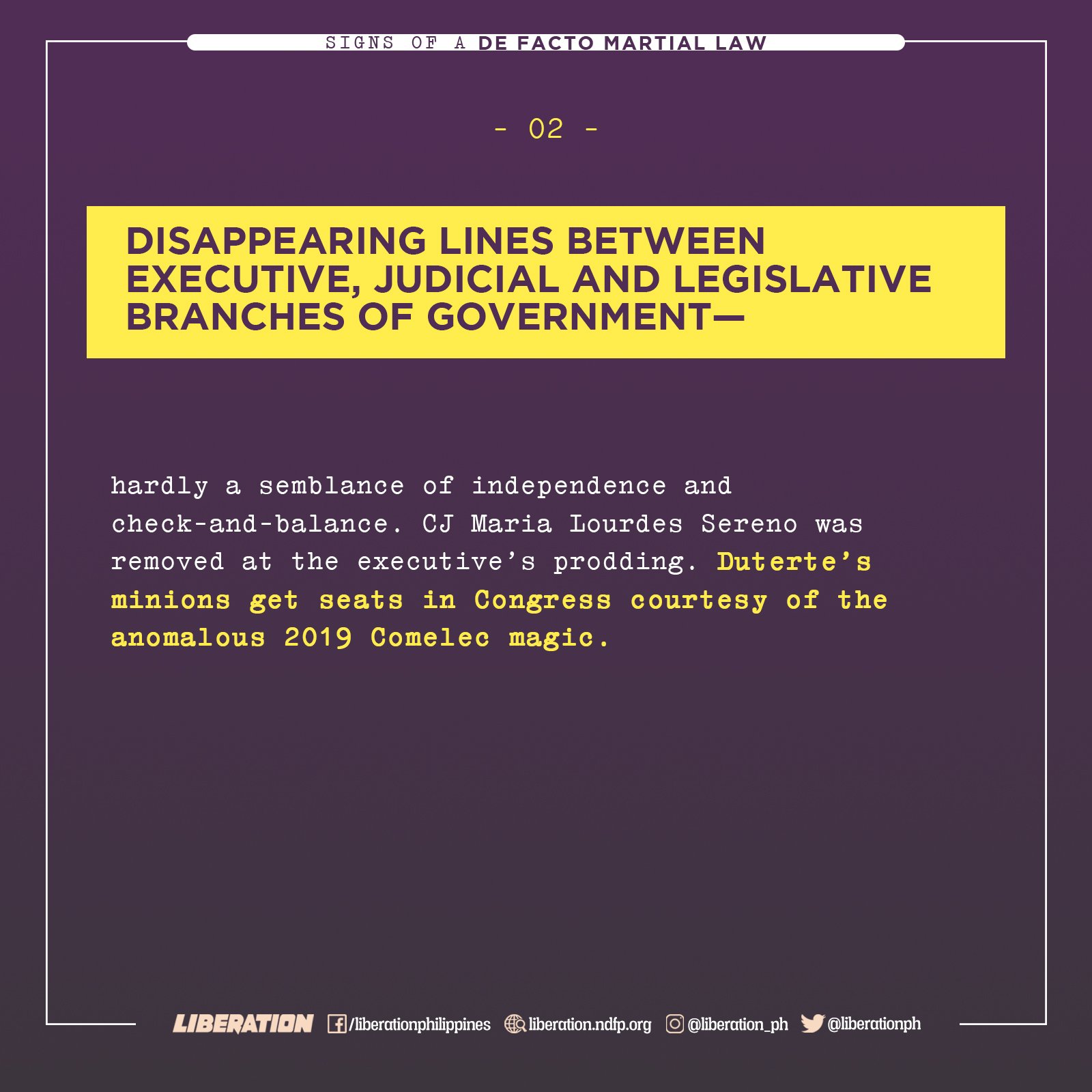
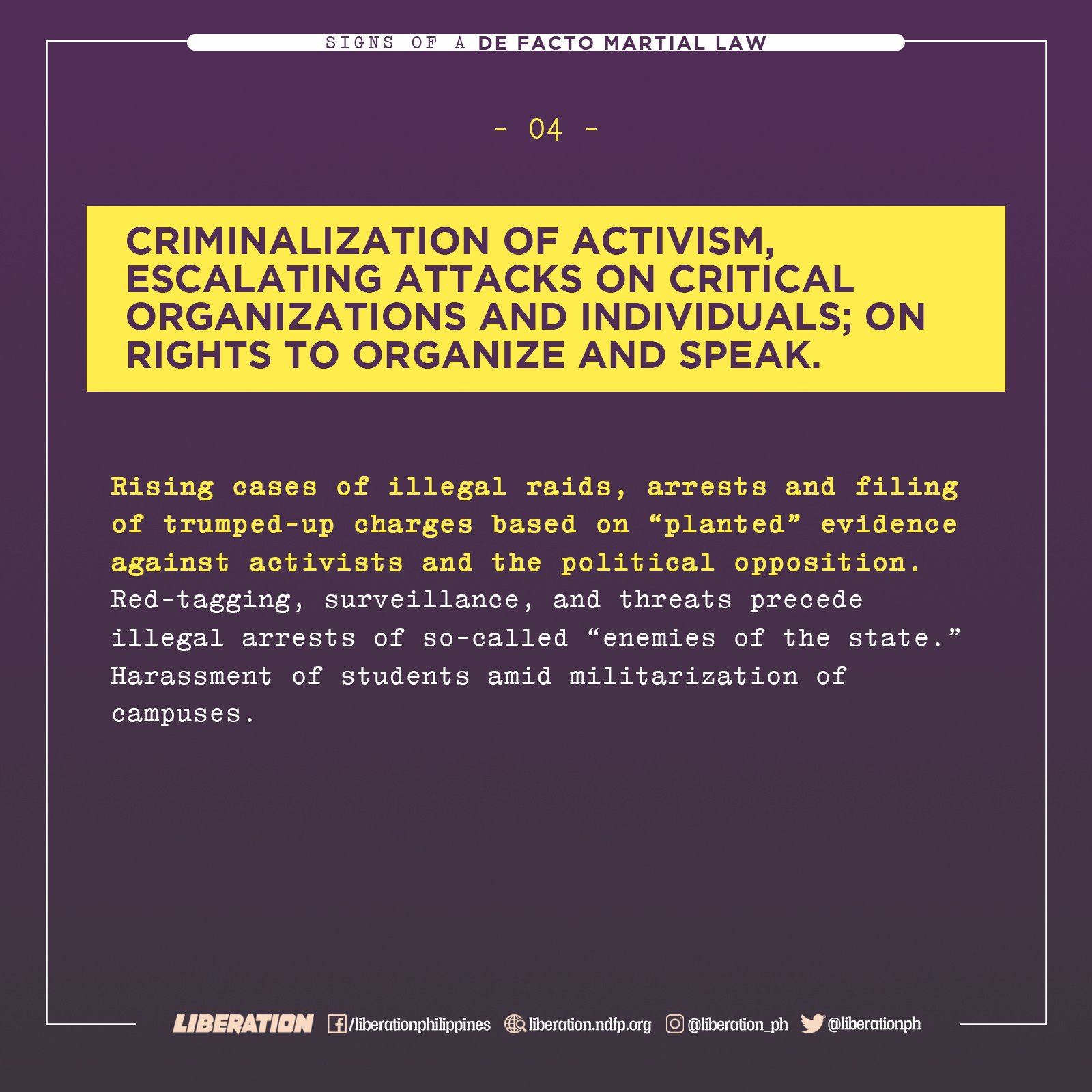
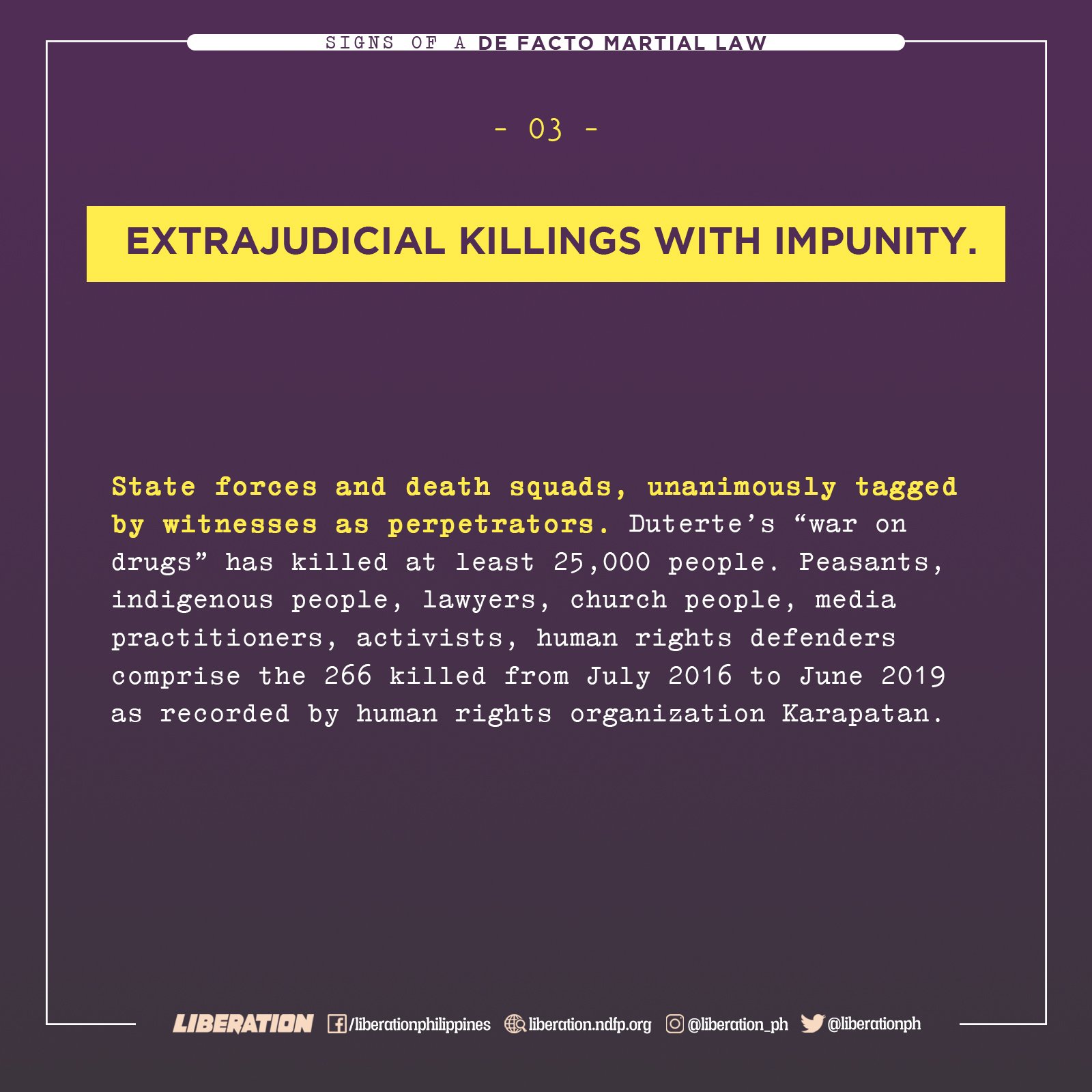
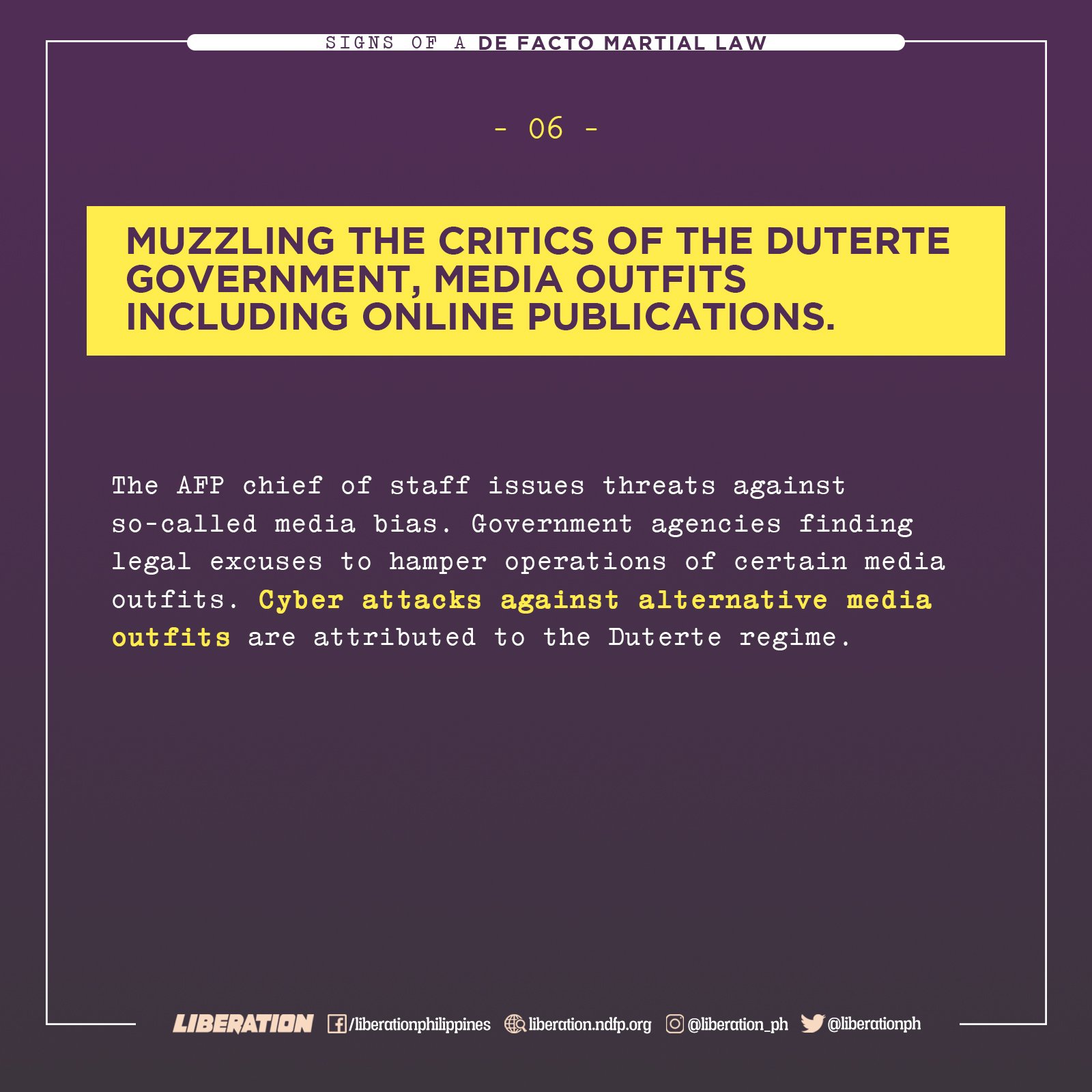
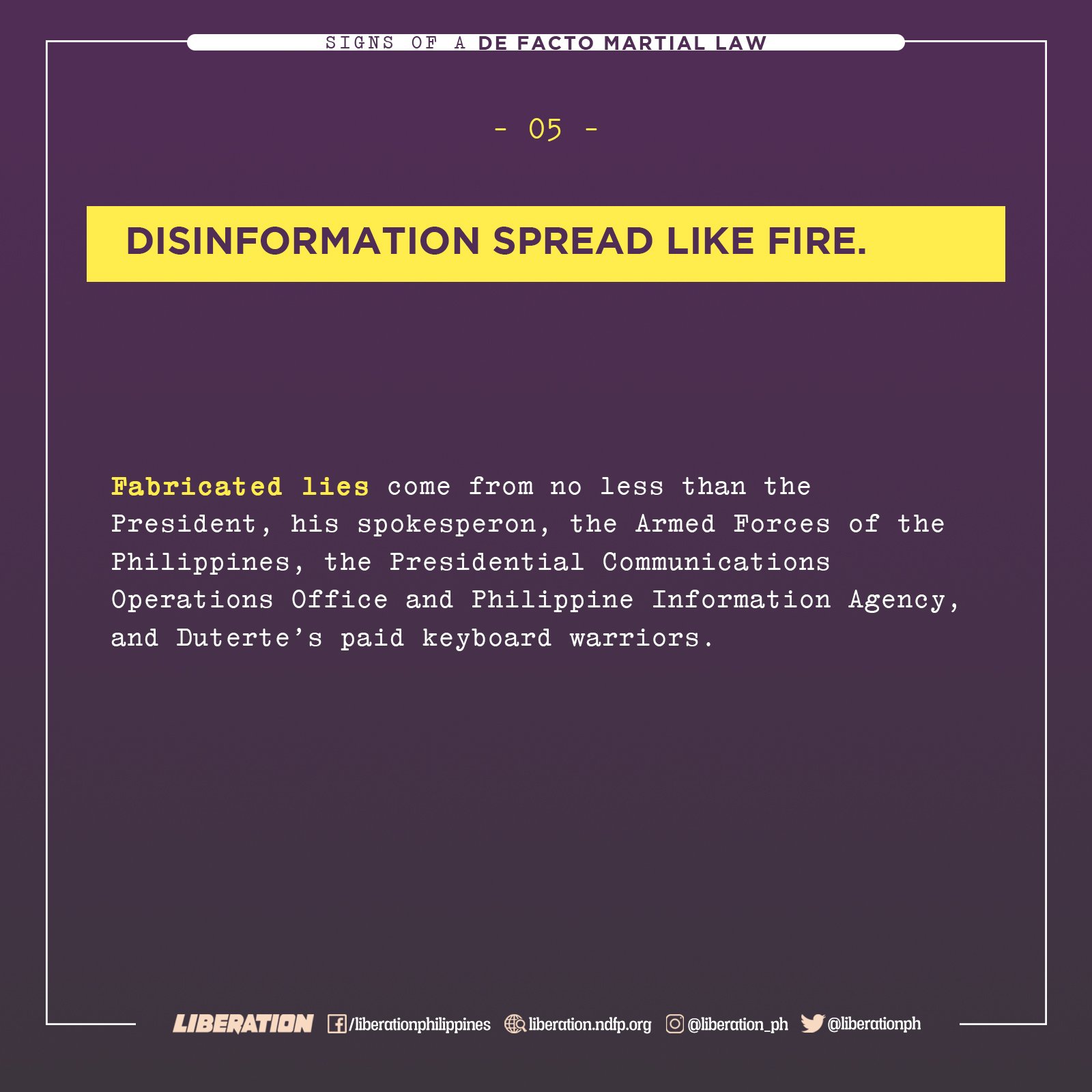
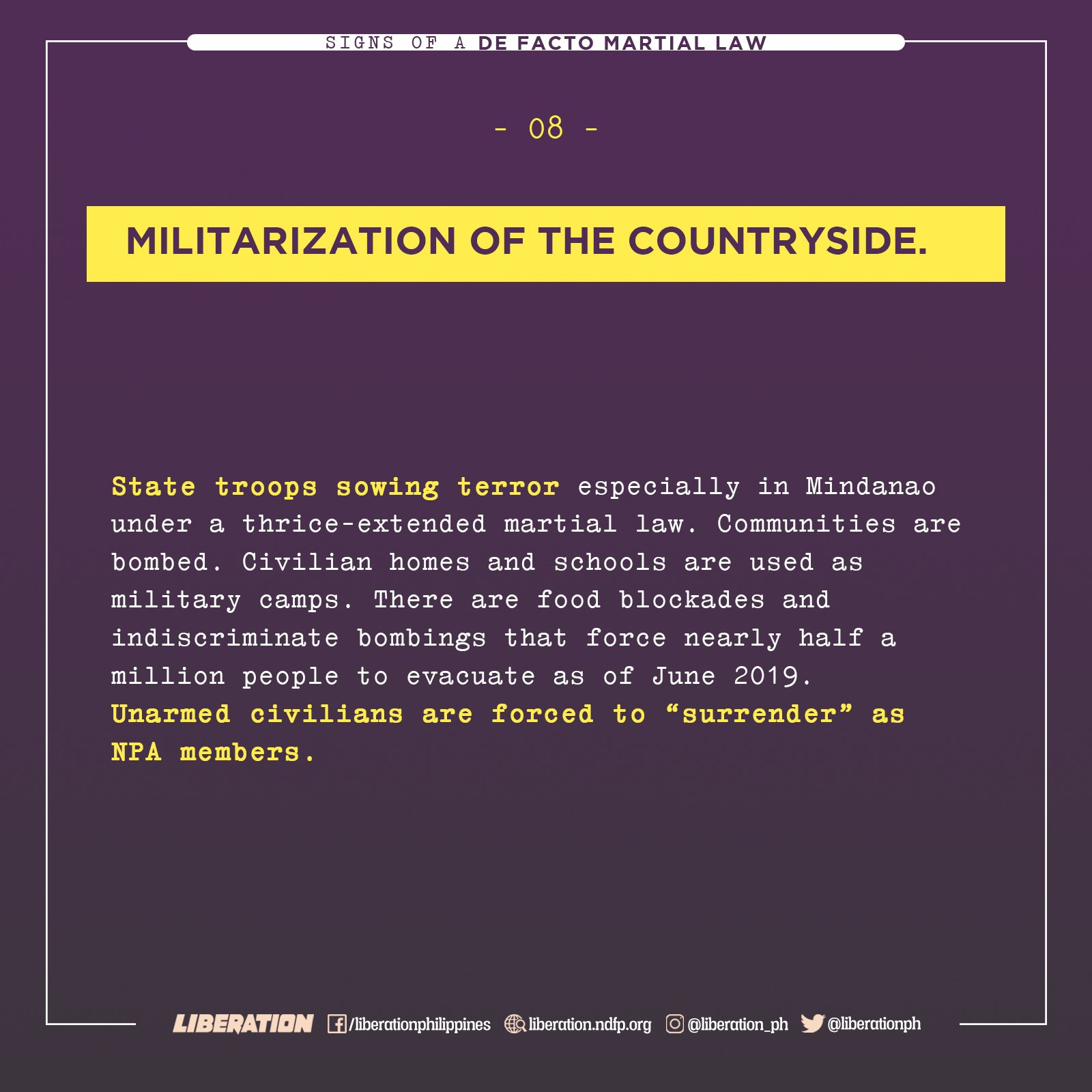
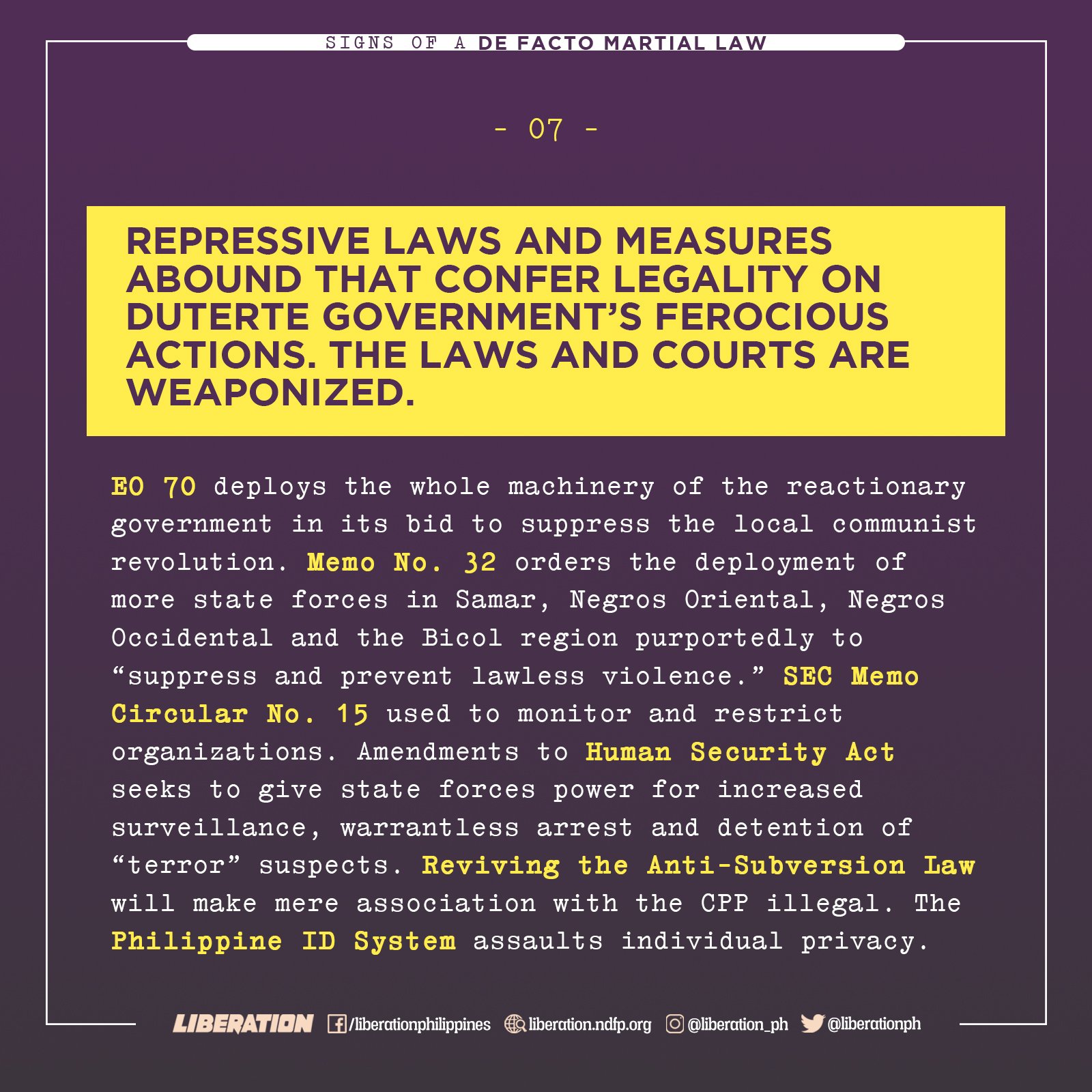
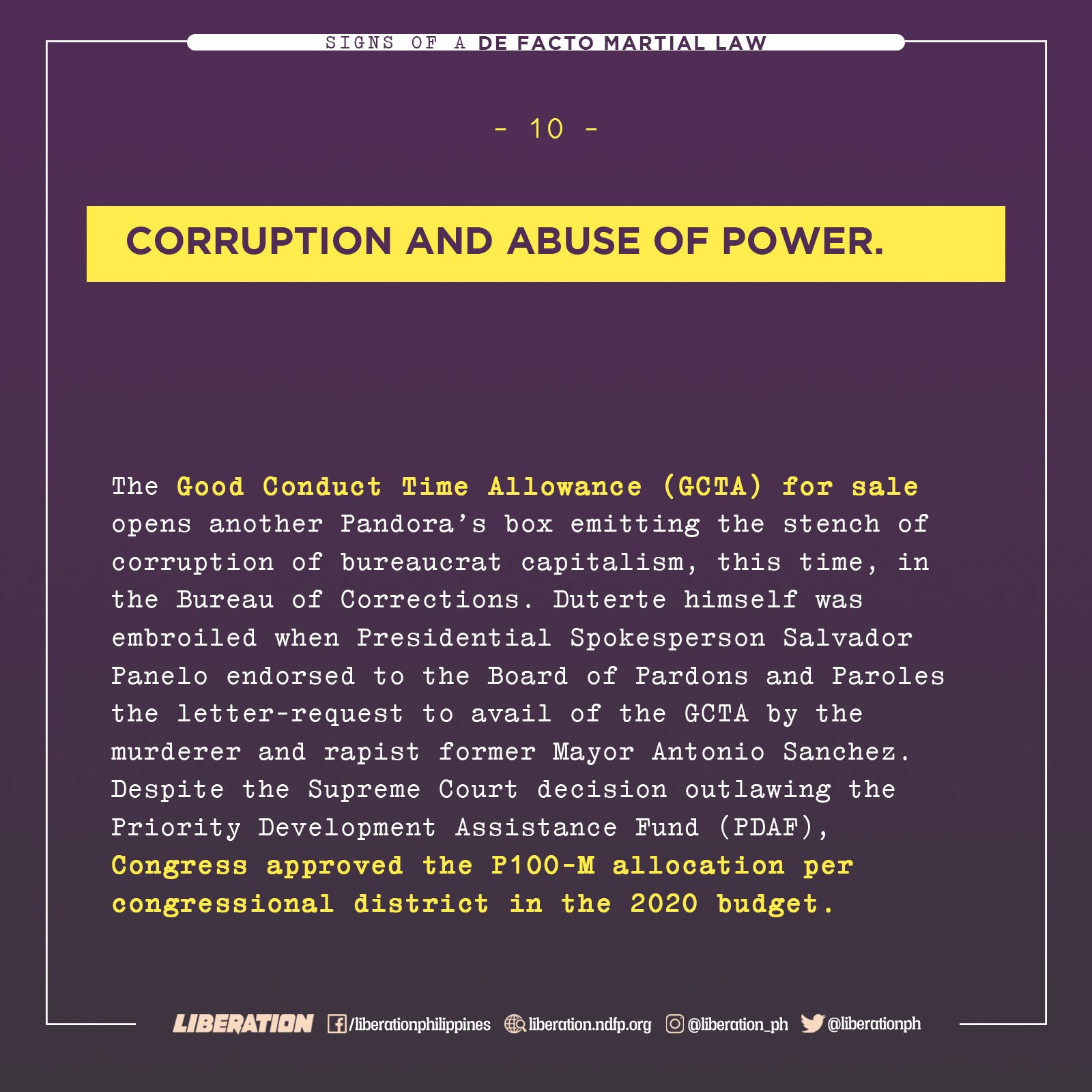



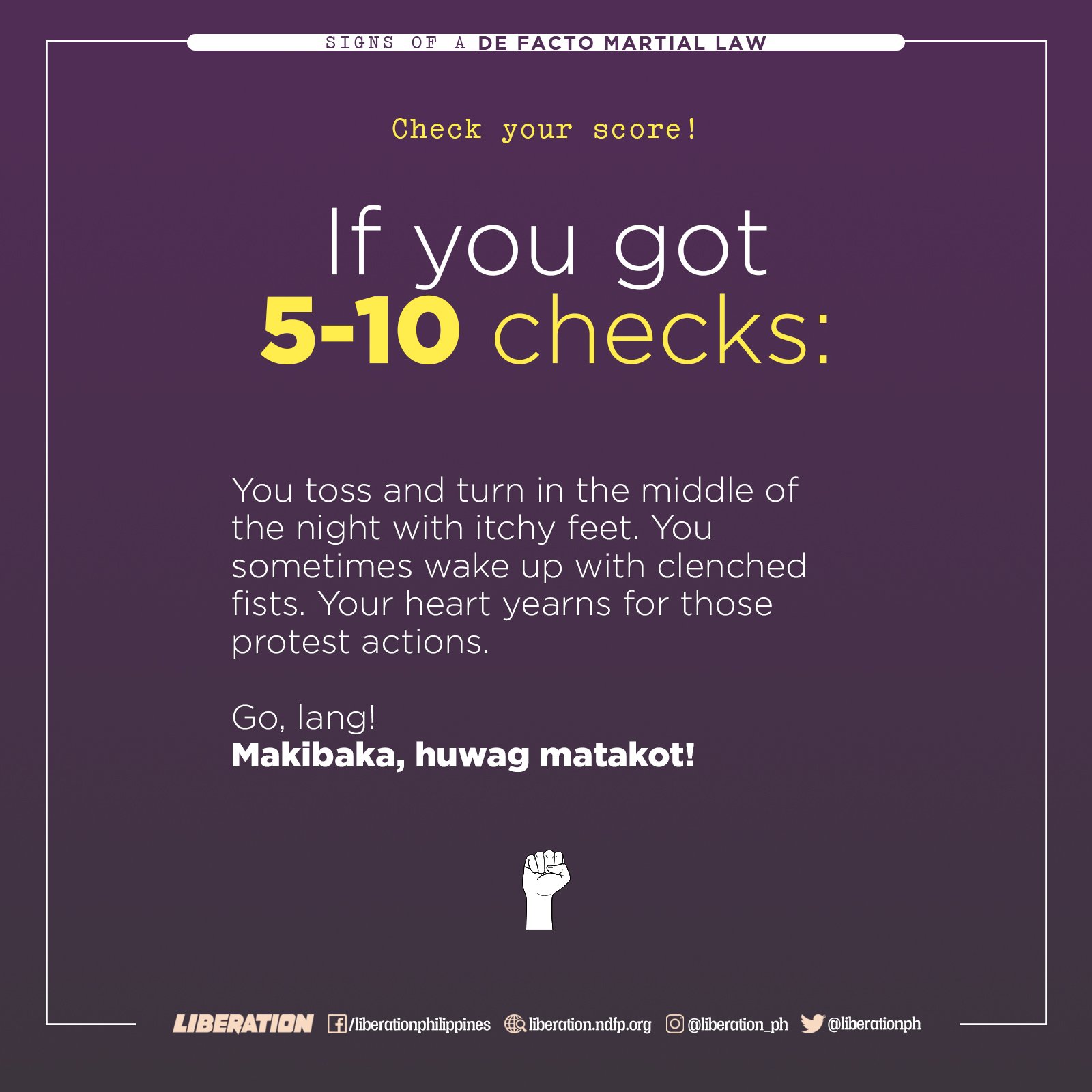

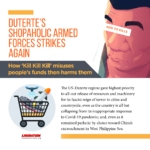

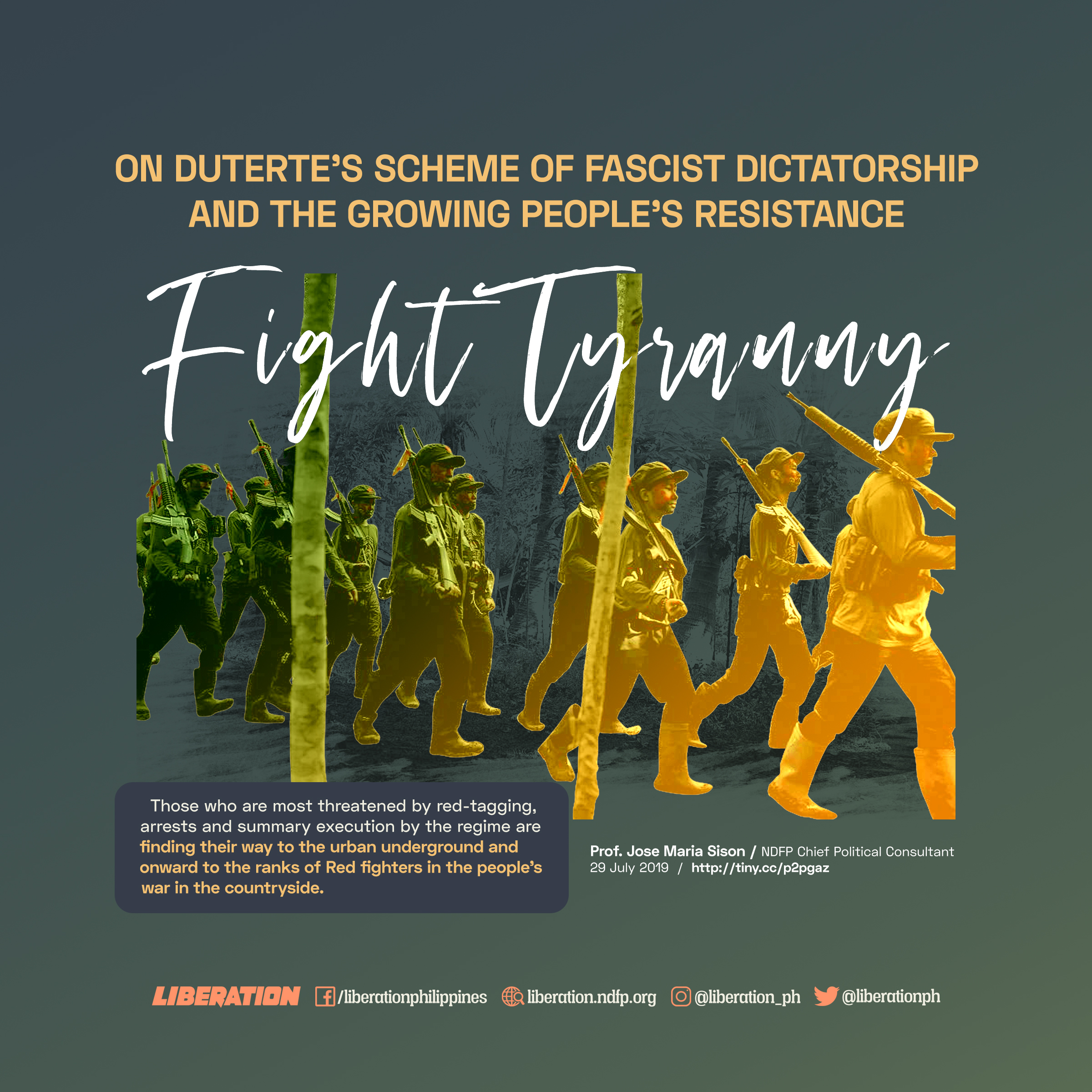
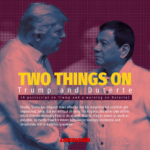

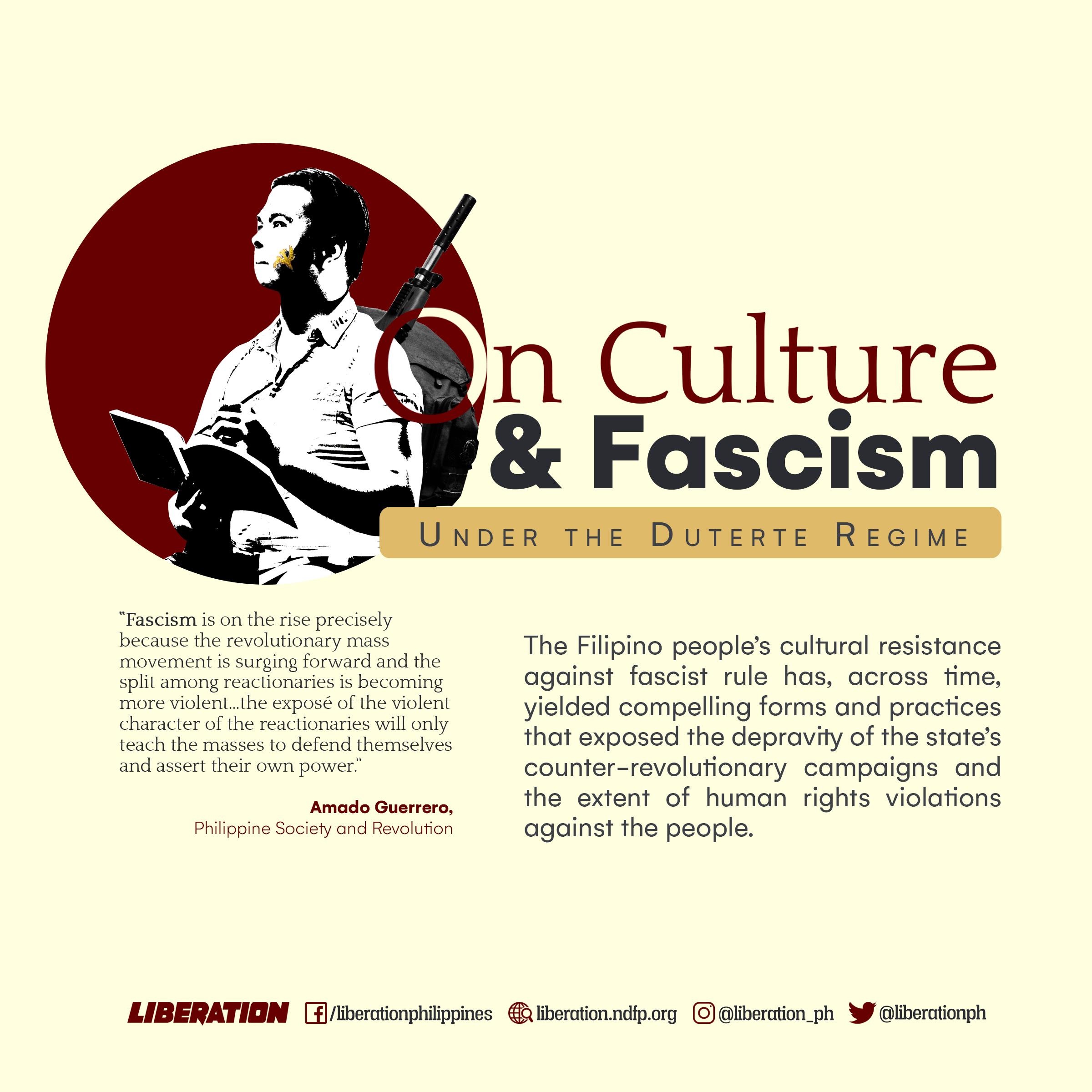
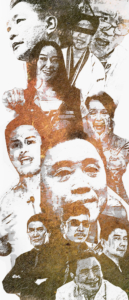 by Alejo Nicolas
by Alejo Nicolas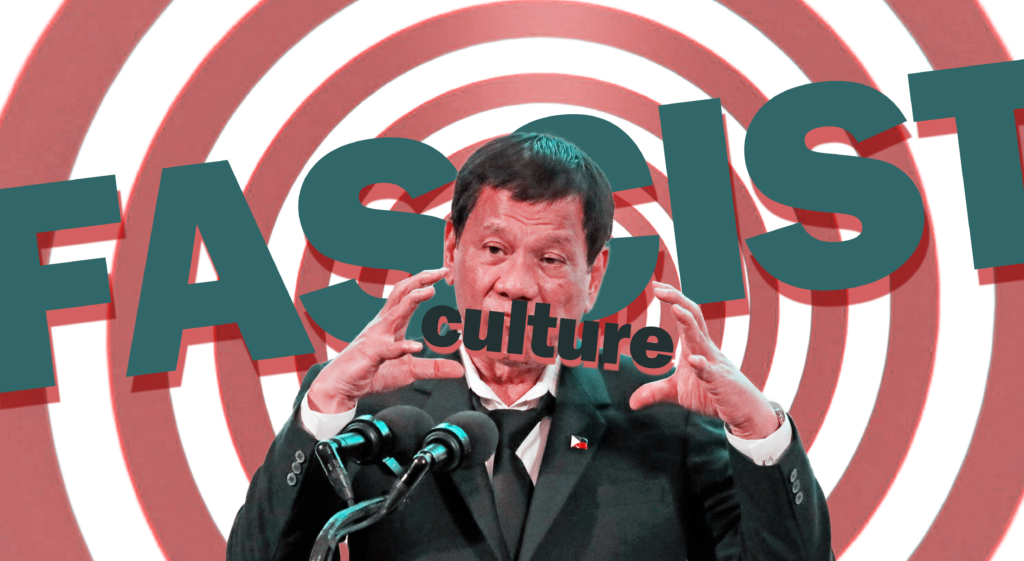 Signs of tyranny
Signs of tyranny Art and culture for the anti-fascist struggle
Art and culture for the anti-fascist struggle